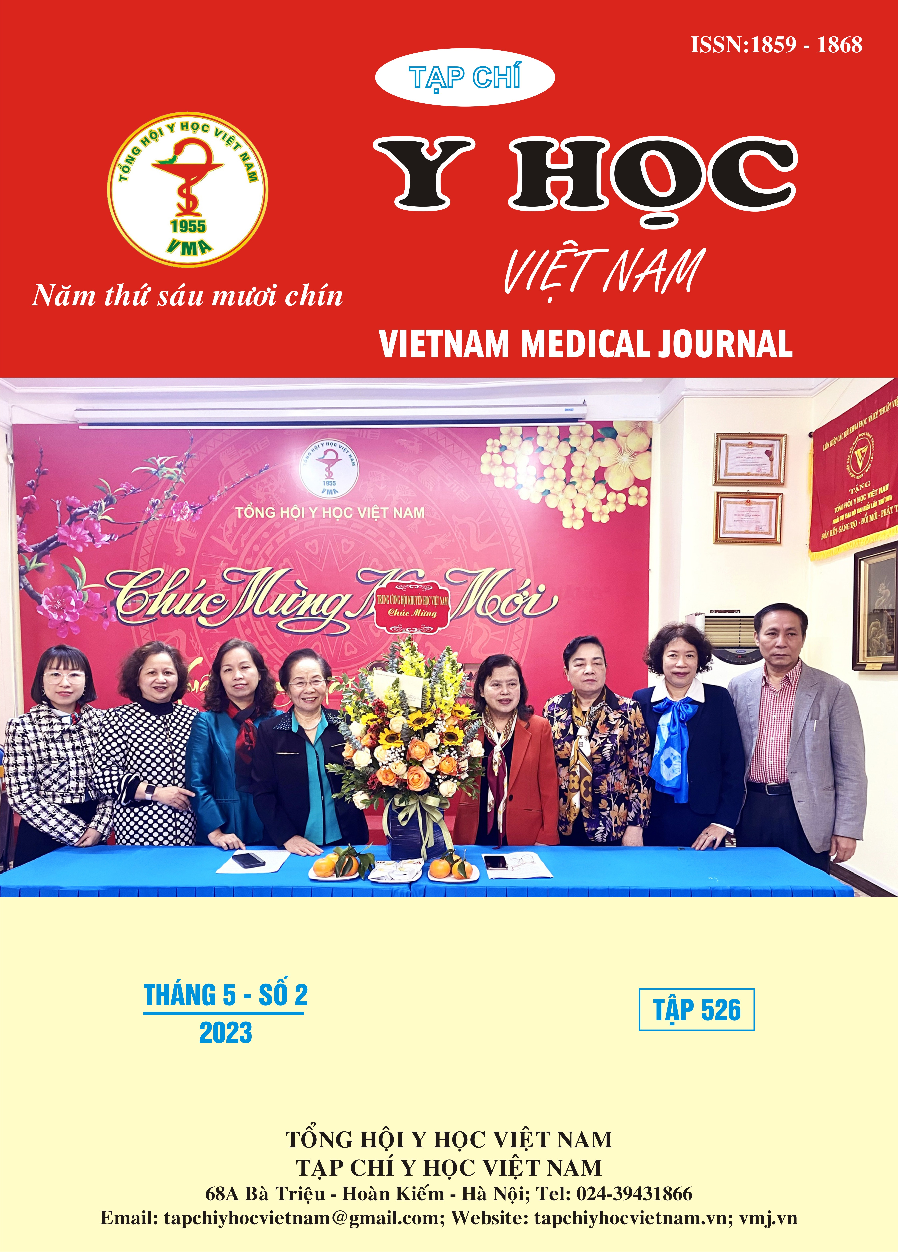EVALUATION OF SPHENOID SINUS PNEUMATIZATION ON SINUS MSCT IN THE PRE-ENDOSCOPIC SINUS SURGERY OF CHRONIC SINUSITIS
Main Article Content
Abstract
Purposes: To evaluate the sphenoid sinus pneumatization on sinus multi-slice CT scanner (MSCT) in the pre-endoscopic sinus surgery of chronic sinusitis patients. Matherial and Method: The cross sectional descriptive study on the chronic sinusitis patients who underwent the sinus MSCT and the endoscopic sinus surgery. Then, the sphenoid sinus was classified after the classification of Hammer. The sphenoid sinus pneumatization was evaluated and classified on sagittal plan to avoid the surgery complication. Results: From 09/2020 to 9/2022, 200 chronic sinusitis patients who underwent the sinus MSCT and endoscopic sinus surgery at Hanoi Medical University Hospital. Among them, 78 patients with sphenoid sinus pneumatization was observed, account for 39% of all study population. The sphenoid sinus was pneumatized into the base of skull on 40 patients, account for 51.28%, into the anterior clinoid process on 29 patients, account for 31.28%. The internal carotid bulging into the sphenoid sinus was observed on 4 patients, account for 5.13% and the sphenoid sinus pneumatization caused an anormal septal on 5 patients, account for 6.41%. Conclusion: The sphenoid sinus pneumatization was a common anomaly. The detection and classification of this anomaly on MSCT had an important role for the pre-endoscopic sinus surgery evaluation.
Article Details
Keywords
sphenoid sinus pneumatization, sinus MSCT, endoscopic sinus surgery
References
2. G.Hammer, C. Radberg. The Sphenoidal Sinus: An Anatomical and Roentgenologic Study with Reference to Transsphenoid Hypophysectomy; Radiologica, Original series 1961; 56(6): 401-422
3. DeLano MC, Fun FY, Zinreich SJ. Relationship of the optic nerve to the posterior paranasal sinuses: a CT anatomic study. AJNR Am J Neuroradiol. 1996;17(4):669-675.
4. Fadda GL et al. Multiparametric statistical correlations between paranasal sinus anatomic variations and chronic rhinosinusitis. Acta Otorhinolaryngol Ital. 2012;32(4):244 251.
5. Nguyễn Văn Hải và cộng sự, “Nghiên cứu các đặc điểm lâm sàng và cận lâm sàng của viêm xoang hàm một bên”. 2018, Trường Đại Học Y Hà Nội.
6. Mikami T, Minamida Y, Koyanagi I, Baba T, Houkin K. Anatomical variations in pneumatization of the anterior clinoid process. J Neurosurg. 2007;106(1):170 174. doi:10.3171/jns.2007.106.1.170
7. Sundaresan AS, Hirsch AG, Young AJ, Pollak J, Tan BK, Schleimer RP, Kern RC, Kennedy TL, Greene JS, Stewart WF, Bandeen-Roche K, Schwartz BS. Longitudinal Evaluation of Chronic Rhinosinusitis Symptom in a Population-based Sample. J Allergy Clin Immunol Pract. 2018; 6(4):1327-1335.e3. doi:10.1016/ j.jaip.2017.10.012
8. Hiremath SB, Gautam AA, Sheeja K, Benjamin G. Assessment of variations in sphenoid sinus pneumatization in Indian population: A multidetector computed tomography study. Indian J Radiol Imaging. 2018;28(3):273-279. doi:10.4103/ijri.IJRI_70_18
9. Raseman J, Guryildirim M, Beer-Furlan A, Jhaveri M, Tajudeen BA, Byrne RW, Batra PS. Preoperative Computed Tomography Imaging of the Sphenoid Sinus: Striving Towards Safe Transsphenoidal Surgery. J Neurol Surg Part B Skull Base. 2020;81(3):251-262. doi:10.1055/s-0039-1691831.


